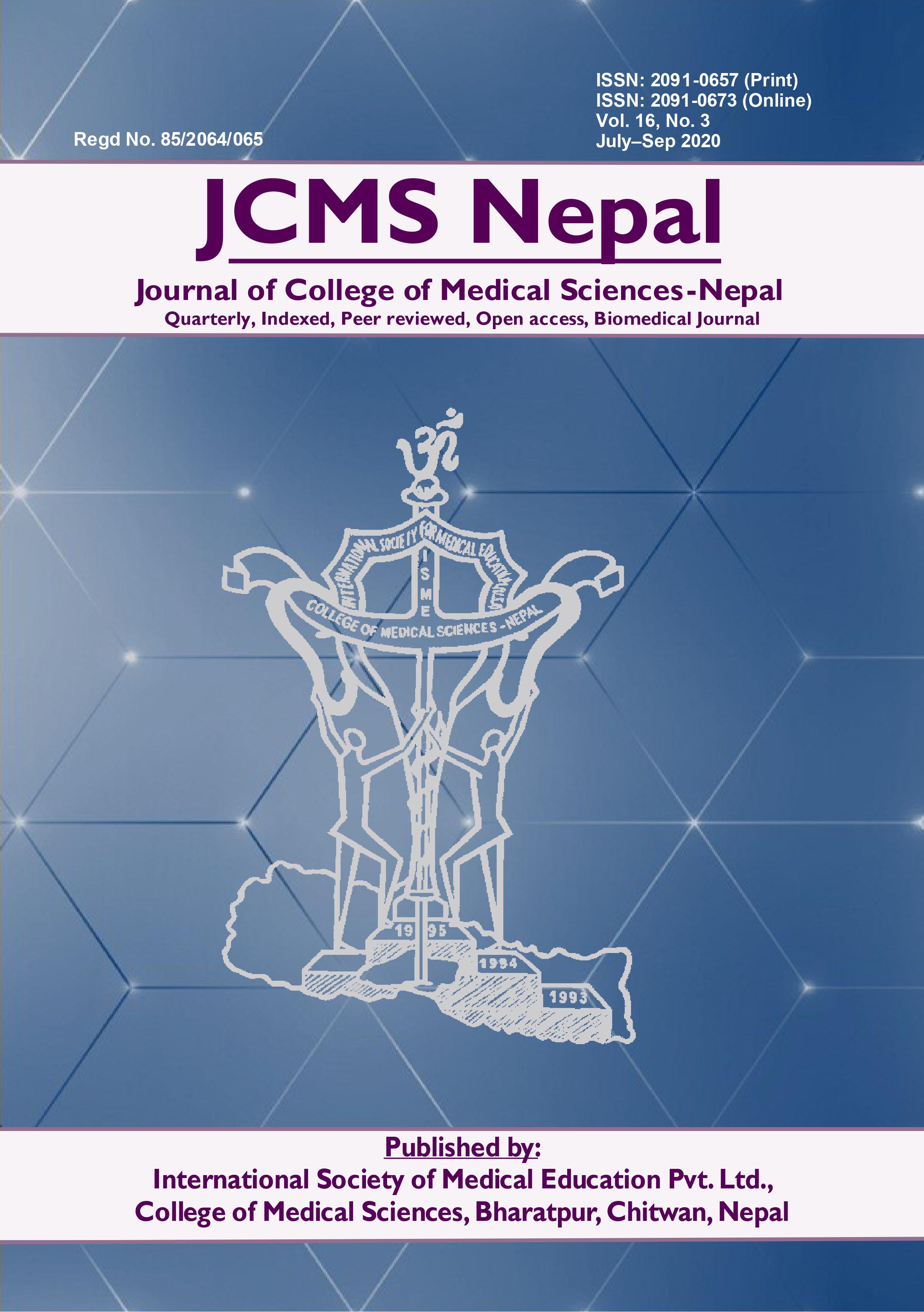Placental thickness: A Sonographic Indicator of Gestational Age in Normal Singleton Pregnancies
DOI:
https://doi.org/10.3126/jcmsn.v16i3.28476Keywords:
Gestational age, placental position, placental thickness, ultrasoundAbstract
Background: Presently the most effective way to date pregnancy is by use of ultrasound. Several sonographically derived fetal parameters used to date pregnancy include fetal crown - rump length (CRL), biparietal diameter (BPD), head circumference (HC), femur length (FL),and abdominal circumference (AC). Placental thickness measured at the level of the umbilical cord insertion can be used as a new parameter to estimate gestational age of the fetus. The present study was undertaken to evaluate the relationship between placental thickness and gestational age of the fetus. Methods: Cross-sectional study was conducted in the College of Medical Science and Teaching Hospital, Bharatpur, Nepal among 150 patients with normal singleton pregnancies presenting for routine antenatal visit of all gestational ages from 11 weeks to 40 weeks. Patients with pregnancy induced hypertension, diabetes mellitus, intrauterine growth retardation, hydrops foetalis, congenital malformation and twins are excluded. Placental thickness value, in mm, was calculated by averaging the three best measurements for each case. We studied the relationship of placental thickness, in mm, measured at the level of insertion of umbilical cord with advancing gestational age in weeks. Correlation of mean placental thickness with gestational age from 11 weeks to 40 weeks was calculated. Results: It was observed that the placental thickness gradually increased from approximately 11 mm at 11 weeks to 38.33 mm at 40 weeks of gestation. From 11 to 34 weeks of gestation, the placental thickness (in mm) almost matched the gestational age in weeks, thereafter from 35 to 40 weeks; the placental thickness was lower by 1 to 2 mm. Conclusion: The relationship between the placental thickness and gestational age was linear and direct. Placental thickness (in mm) measurement can be an important additional parameter for estimating gestational age along with other parameters especially from 11 to 34 weeks of gestation.
Downloads
Downloads
Published
How to Cite
Issue
Section
License
This license enables reusers to copy and distribute the material in any medium or format in unadapted form only, for noncommercial purposes only, and only so long as attribution is given to the creator.




